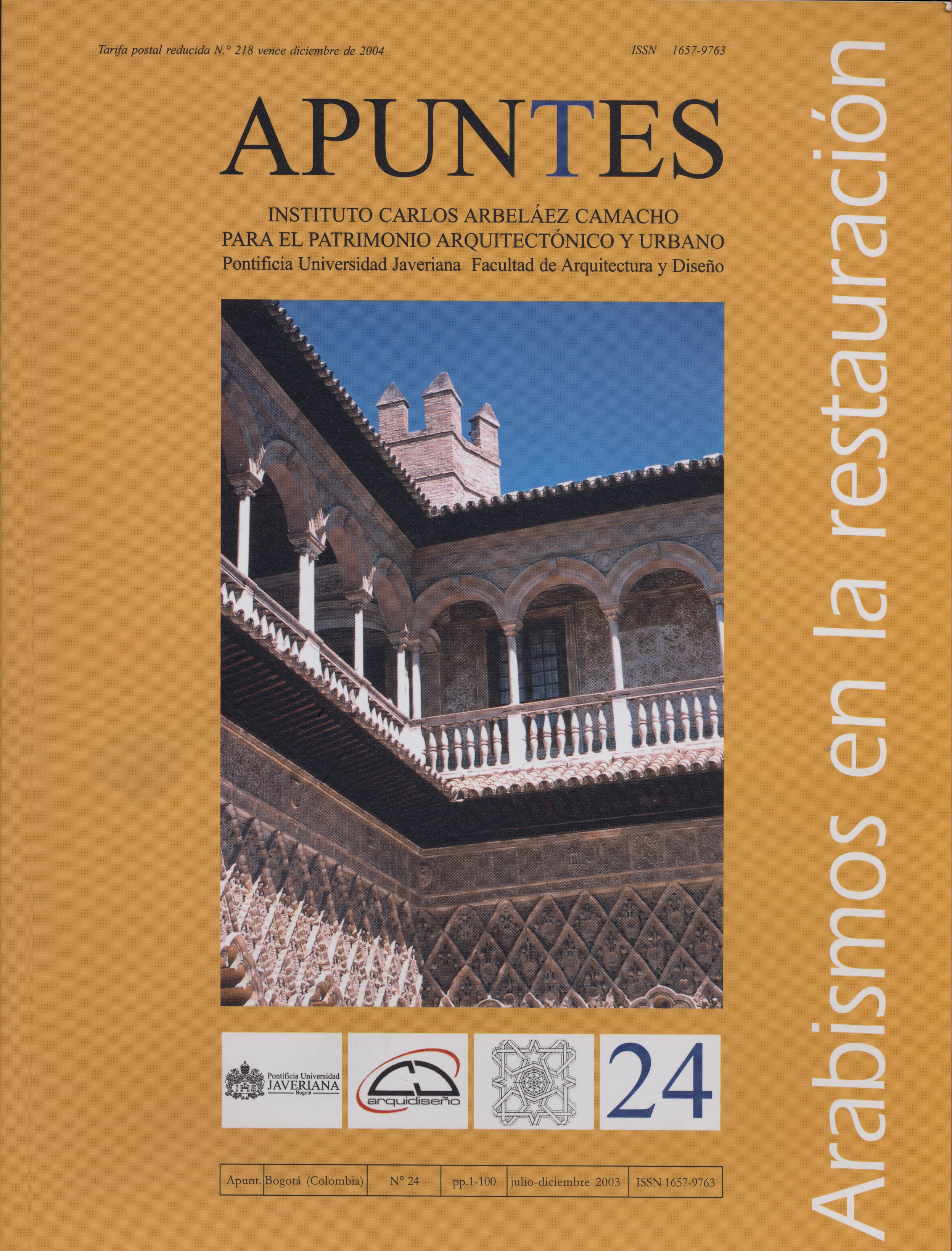Abstract
Among the variety of subjects concern to the preservation of the architectural heritagelies the cultural and linguistic customs truth time. Therefore, this research emphasizedthe specific argot used by the former, intuitive, and most of the time empiric masonbuilder of the past has been pointed out; both in the artistic, as well as in thearchitectural fields and the adoption of it as a repertoire lexica of forms and technicalwords commonly used in architecture during the Nueva Granada –name given toColombia during the colonial period–, which is one of today’s most valuable ColombianCultural Heritage.The language spoken by those in architecture is an issue poorly taken care of inour Country. On one hand, there is a vacuity respect to the adequate use of a formalrepertoire language –spoken and written in both fields, architecture and engineering;for those involved in the architectural restoration and preservation of the constructedPatrimony; On the other hand, new generations have forgotten this significant linguisticway to communicate with each other professionally.It is very important to research about the use given to “Arabism’s in architecturaland cultural heritage” and explore if their use, meaning and oral tradition are, still,alive today.This investigation looks after two main objectives: facilitate the appropriationof the idiomatic terms professionally to understand the development constructiveprocess and the architectural restoration, and becoming a consultant guide to theArchitect, Engineer, the student, and any other person who has interests in thisimportant cultural and patrimonial matter.Apuntes is registered under a Creative Commons Attribution 4.0 International Public License. Thus, this work may be reproduced, distributed, and publicly shared in digital format, as long as the names of the authors and Pontificia Universidad Javeriana are acknowledged. Others are allowed to quote, adapt, transform, auto-archive, republish, and create based on this material, for any purpose (even commercial ones), provided the authorship is duly acknowledged, a link to the original work is provided, and it is specified if changes have been made. Pontificia Universidad Javeriana does not hold the rights of published works and the authors are solely responsible for the contents of their works; they keep the moral, intellectual, privacy, and publicity rights.
Approving the intervention of the work (review, copy-editing, translation, layout) and the following outreach, are granted through an use license and not through an assignment of rights. This means the journal and Pontificia Universidad Javeriana cannot be held responsible for any ethical malpractice by the authors. As a consequence of the protection granted by the use license, the journal is not required to publish recantations or modify information already published, unless the errata stems from the editorial management process. Publishing contents in this journal does not generate royalties for contributors.


